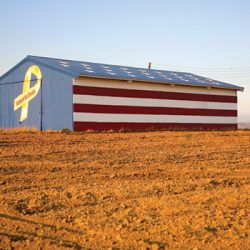Putting Freshwater Species on the Map
UW ecologists look at the impact of land-use policies on aquatic biodiversity.
Cities are diverse environments for humans, but as urban areas grow, they’re likely to come at the expense of diversity in other crucial forms of habitats.
An interdisciplinary team of UW researchers has put together a series of maps to show, for the first time, how different land-use scenarios could affect freshwater biodiversity across the United States.
The team predicts that watershed quality will decline in rapidly growing regions, such as California and the southeastern states, if current urbanization policies remain in place. This could significantly reduce the number of fish and amphibian species in those areas. However, the team also projected that urban growth could be curtailed if cities implemented “smart growth” strategies, thereby protecting water quality and preserving biodiversity.
Sebastián Martinuzzi, a postdoc in forest ecology and management, is the lead author on the report, titled “Land Use Change and Freshwater Conservation,” which was published this fall in the journal Global Change Biology. He acknowledges it isn’t realistic for cities to wholly restrict their growth, but the point is to illustrate that land-use patterns truly do have an impact on surrounding ecosystems.
“For freshwater, what happens on the land matters,” Martinuzzi says. “If we control urban sprawl, it could have some positive impact.”
In addition to urban expansion, Martinuzzi and his team also looked at crop-cover scenarios. If demand for crops increases, then southeastern states are projected to substantially increase crop acreage, which would negatively affect watersheds and, by extension, biodiversity. The Midwest is likely to experience a similar trend, but to a lesser degree.
Predicting the future is a tricky business, but Martinuzzi says the maps show general trends and variations, which could help policymakers — and the general public — better appreciate the environmental impact of land-related economic decisions.
“Maps are very powerful,” he says. “They can show you areas that may be in trouble and where there may be room for conservation.”
Published in the Spring 2014 issue



Comments
No comments posted yet.